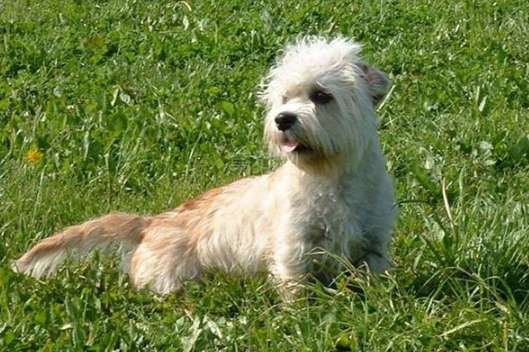Short-legged and long-bodied terrier, native to Scotland, originated in the 17th century, looks like its name, with short legs and long body, and it seems to have its own A cute, melancholy scent. However, don’t look at the short-legged and long-bodied terrier who always has a faint expression on his face and feels unhappy every day. In fact, he has a very lively personality and barks loudly, making him very suitable as a guard dog for the family.
So, if you want to buy a short-legged and long-body terrier to raise, you must carefully read the purchasing tips carefully compiled by the editor to avoid being " Pitfall~

1. Look Body shape
Height: 20 cm-27 cm
Weight: 8 kg-10 kg
2. Look at the head
strong>A large head is in proportion to the body, a small head is a fault. The muscles are well developed, especially outside the cheekbones.
3. Look at the eyes
The eyes are big, round, bright, but not protruding. The eyes are widely spaced apart, set low, and pointed forward. Eye color is dark brown, light rims are a fault.
4. Look at the ears
The shape of the ears is wide at the base and then gradually becomes pointed. The ears are relatively thin, about 3 to 4 inches in length. If the short-legged, long-bodied Terrier has erect ears, it may be a fault.
5. Look at the forelimbs
The shoulders are fully tilted back so that there is enough space for the front end to balance the angle of the hindquarters. The length of the upper arms is roughly equal to the length of the shoulder blades, and the elbows are close to the ribs and can move freely. The front legs are short, muscular, well-boned and set widely apart. The toes point very slightly outward and the forelegs are almost straight when viewed from the side. If the forelegs are bent, it is a fault.
6. Look at the feet
The feet are round and the pads are thick. It is better to remove the dewclaws on the forelimbs. The hind paws are much smaller than the front paws and there are no dewclaws. Nails should be strong and dark, white nails allowed. In addition, if the short-legged and long-bodied terrier you see has flat feet, it is a fault.
7. Look at the coat
The coat has two different colors: pepper color, blue-gray to bright silver with dark brown or silver spots, bright gray or white crest; mustard Color, dark khaki to cream with white spots and crest. Also, it looks better if there are dark shadows between each color. The short-legged and long-bodied Terrier has a double coat, which is composed of proportional coarse hair and fine hair. This coat can feel clearly demarcated, but if it feels rough to the touch, it is a fault.
8. Look at the tail
The tail is about 8 to 10 inches long, with a thick base and a thick part that is about 4 inches long and then gradually tapers. The position of the tail is slightly lower than the extension line of the hip curve, held behind the back, slightly higher than the horizontal line of the back, and slightly curved into a crescent shape. When the Terrier is excited, the tail may be held perpendicular to the body, but it must not be curled.
9. Look at the gait
The correct gait of a short-legged and long-bodied terrier requires a relaxed and natural gait, with good front and rear body guidance. The movements of the legs are all in the same plane. Stiff, unnatural movement, jumping, rocking and lack of hindquarter drive are all faults.
As for the tips for selecting short-legged and long-bodied terriers, the editor will share this today. If you have anything else you want to know, please continue to pay attention to this site!